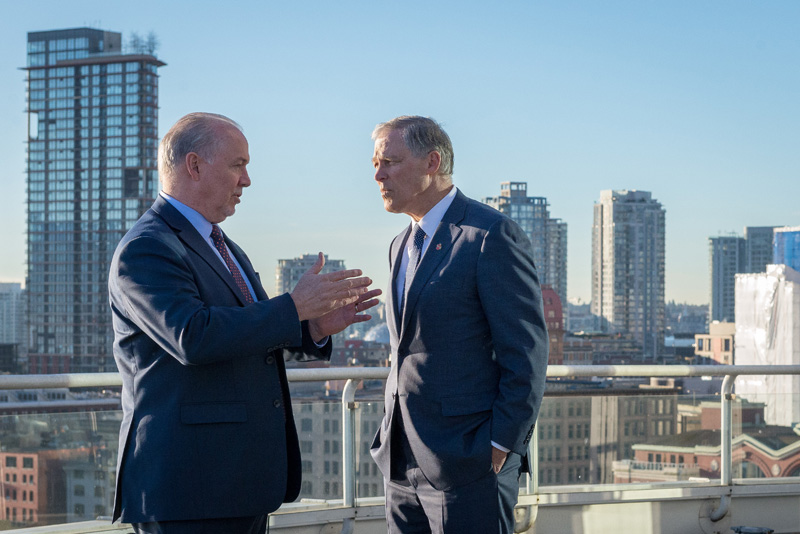BC to fund high speed rail study with Washington and Oregon
21 March 2018Canada/US – The B.C. government will help fund a study of a potential ultra-high-speed corridor service connecting Vancouver with Seattle, Portland and beyond, the office of the premier said on March 16.
Premier John Horgan was joined by Washington governor Jay Inslee to announce that B.C. will contribute CAD 300,000 (USD 230,000) toward an in-depth study with Washington state on the concept of a corridor service that would cut travel times between Vancouver and Seattle to about 60 minutes, from three hours. The Washington state legislature approved the week prior funding of up to USD 1.2M toward the new in-depth study.
“The convenience of a one-hour trip between Vancouver and Seattle would create countless opportunities for people in both B.C. and Washington, from sports or concert getaways for families, to untold economic growth potential for businesses,” Horgan said. “Exploring the possibility of creating a clean, efficient high-speed corridor is particularly important as the Pacific Northwest grows in economic importance, and we look to reduce barriers to expansion across our borders.”
WSDOT hired CH2M Hill to prepare a report on ultra high speed rail in this corridor, which it released in February. The study was paid for with USD 300,000 from the state legislature. The business community also contributed some funds. The study assumes public agencies and the private sector would share future planning, construction and operation costs. The Feb. 1 Economic Impacts Analysis (an addendum to the study) was funded with USD 50,000 from Microsoft and USD 10,000 from trade unions.
The report assumed a high level of tunnelling work along the line, which could be reduced. Cost estimates are between USD 24bn and USD 42bn.
“This ultra-high-speed corridor is an exciting proposal for both British Columbia and Washington, aligning with our mutual goal of strengthening our economies through collaboration,” said Inslee.
The new study will build on the previous preliminary analysis, and will consider the practicality and business case for a high-speed corridor service by addressing factors such as ridership levels, system development, delivery methods and financing. It will include involvement by key community representatives, and stakeholders from the public and private sectors.

